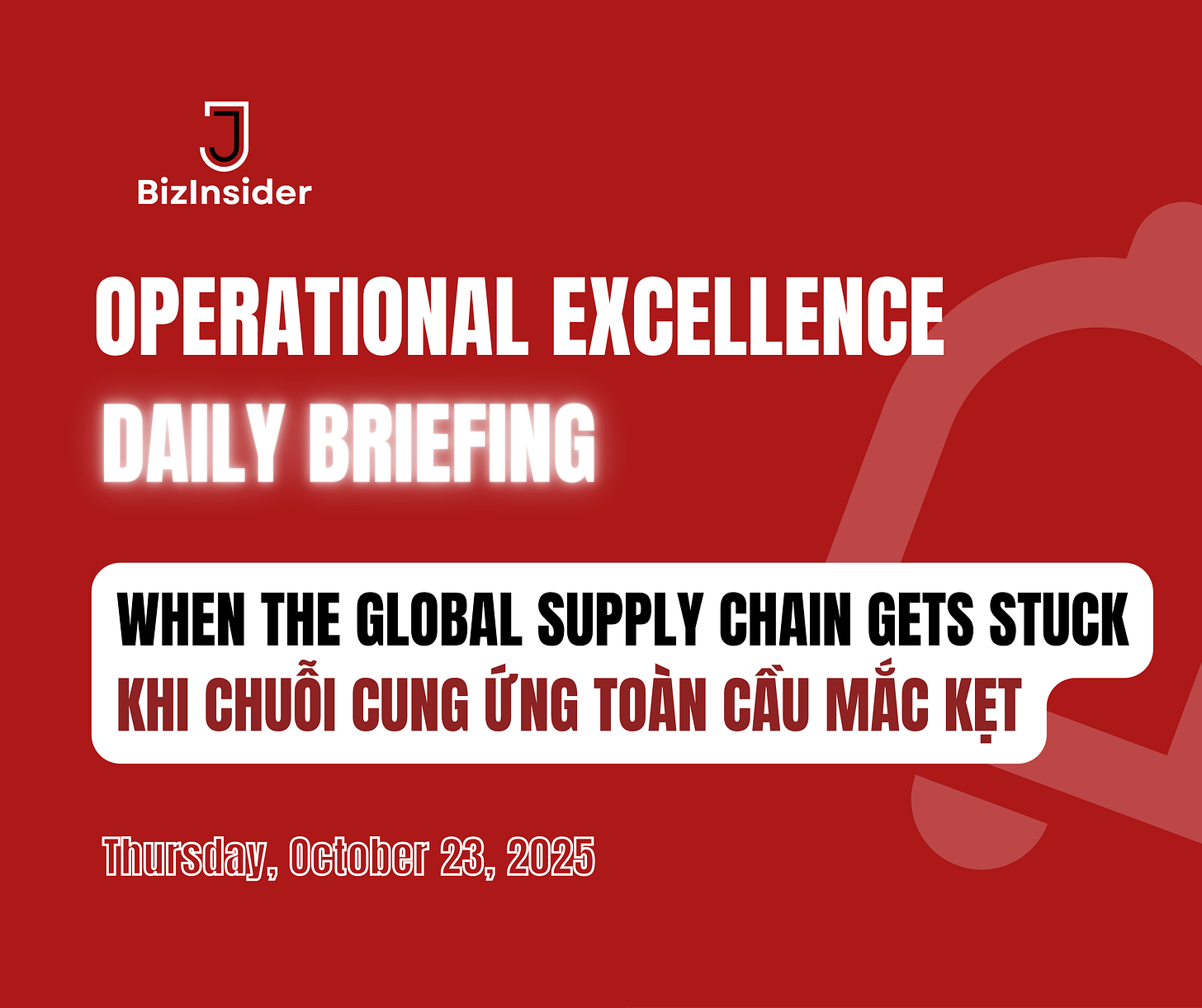Operational Excellence (OPEX) Daily Briefing – Thursday, October 23, 2025: When the Global Supply Chain Gets Stuck: OPEX Lessons from the $1.2 Trillion Breakdown
Điểm Tin Operational Excellence (OPEX) Mỗi Ngày – Thứ Năm, Ngày 23/10/2025: Khi Chuỗi Cung Ứng Toàn Cầu Mắc Kẹt: Bài Học OPEX Từ Thiệt Hại 1.2 Nghìn Tỷ USD
Welcome to my unique weekday article for the paid subscriber-only edition.
Operational Excellence (OPEX) Daily Briefing – issued on weekdays (Monday to Friday).
Điểm tin Operational Excellence (OPEX) hằng ngày (phát hành các ngày thứ Hai đến thứ Sáu).
This is the bilingual post in English and Vietnamese. Vietnamese is below.
Đây là bài viết song ngữ Anh-Việt. Tiếng Việt ở bên dưới.
English
Part 1: Official Statement – When the Global Supply Chain Gets Stuck
On October 23, 2025, according to the latest report from S&P Global, global supply chain costs are causing approximately USD 1.2 trillion in losses each year for businesses — primarily due to operational risks, logistics congestion, routing inefficiencies, and rising transportation costs.
This figure not only reflects the growing expense of international trade but also highlights that the global operational system is under the greatest pressure since the COVID-19 pandemic.
According to the S&P Global Supply Chain Outlook 2025, three main factors are causing the global supply network to become “clogged”:
• Disrupted transportation routes due to geopolitical tensions and trade conflicts across key regions.
• Logistics costs rising by 22% year-over-year, largely driven by container shortages and high fuel prices.
• Weak coordination among production, warehousing, and distribution stages due to fragmented technology and data systems.
As a result, hundreds of multinational corporations are being forced to adjust inventory strategies, extend delivery cycles, and accept sharp declines in profit margins.
A specialist from the World Bank Logistics Division commented:
“The real concern isn’t rising costs — it’s that global operational capacity is slowing down. When the system loses flexibility, companies pay the price in time and customer trust.”
Not only large corporations but also small and medium-sized enterprises (SMEs) are heavily affected.
Delayed shipments, raw material shortages, and surging transportation expenses have eroded their competitiveness.
According to the McKinsey Global Resilience Survey 2025, the average manufacturing firm loses 5–8% of its operating profit solely due to prolonged supply chain disruptions.
What’s striking is that despite advances in logistics technology and predictive analytics, many organizations still lack a flexible operational governance framework capable of handling disruptions.
Too many companies remain focused on short-term cost-cutting instead of investing in resilience and multi-chain coordination.
This situation makes it clear that supply chain management is no longer just about logistics — it has become a litmus test for overall operational capability in global enterprises.
When a single container gets stuck, the entire value flow — from factories and warehouses to people and customers — suffers.
The question for leaders is no longer “How can we deliver faster?” but rather:
“How can we make our operational system resilient enough not to collapse when one link in the chain fails?”
And that’s precisely where Operational Excellence (OPEX) offers critical insights — helping organizations not only fix the consequences of disruptions but also uncover the root causes behind why the global supply chain system has become “gridlocked.”



